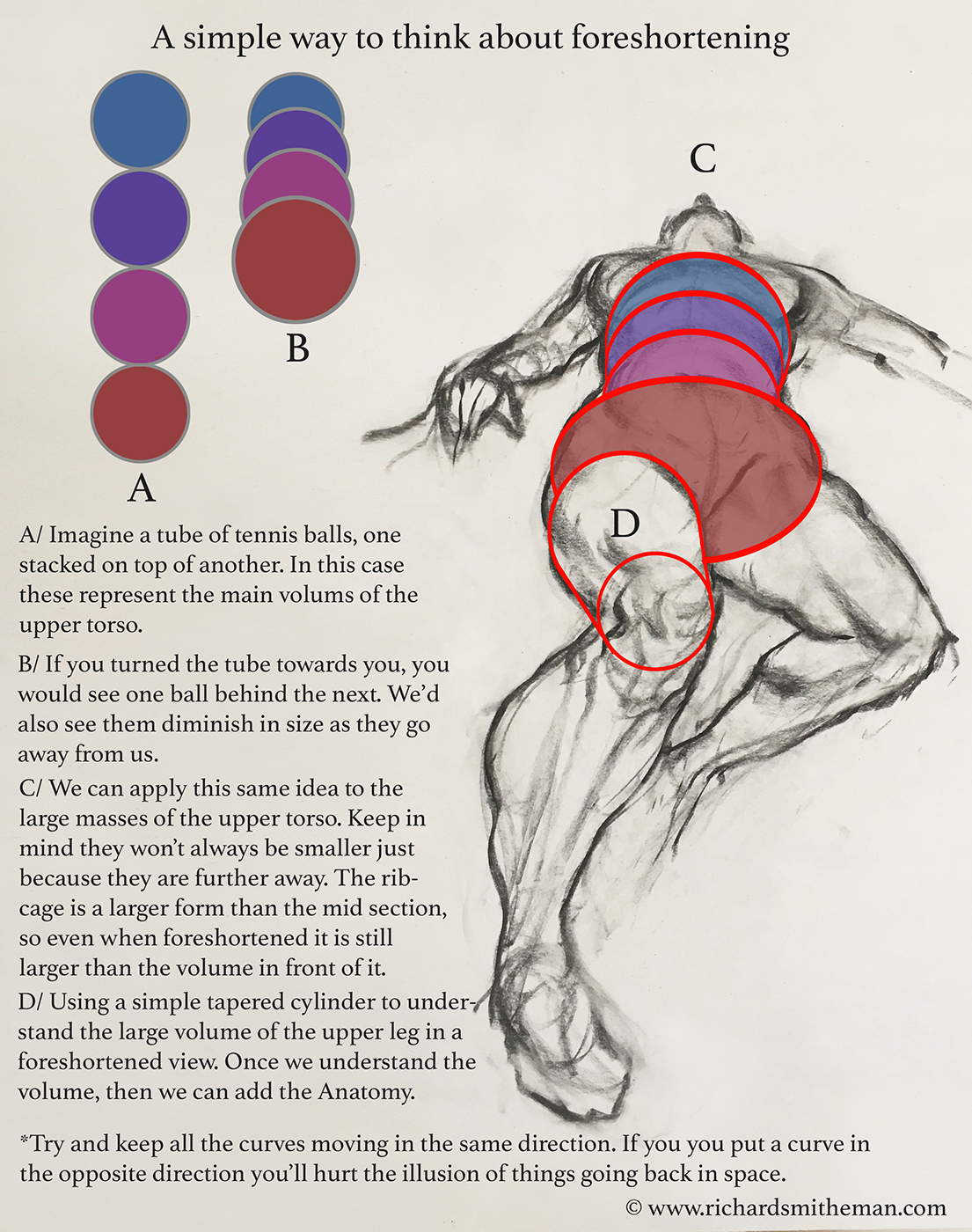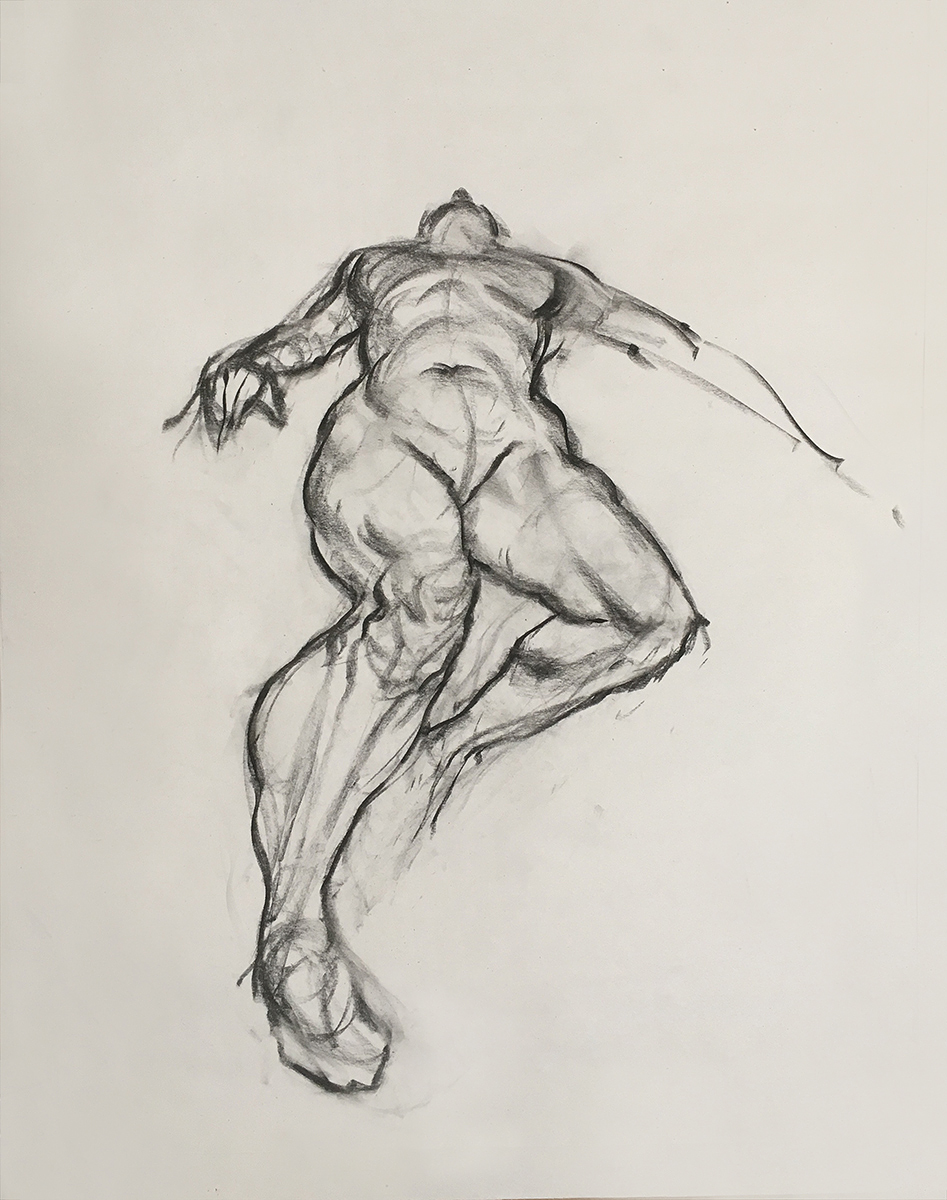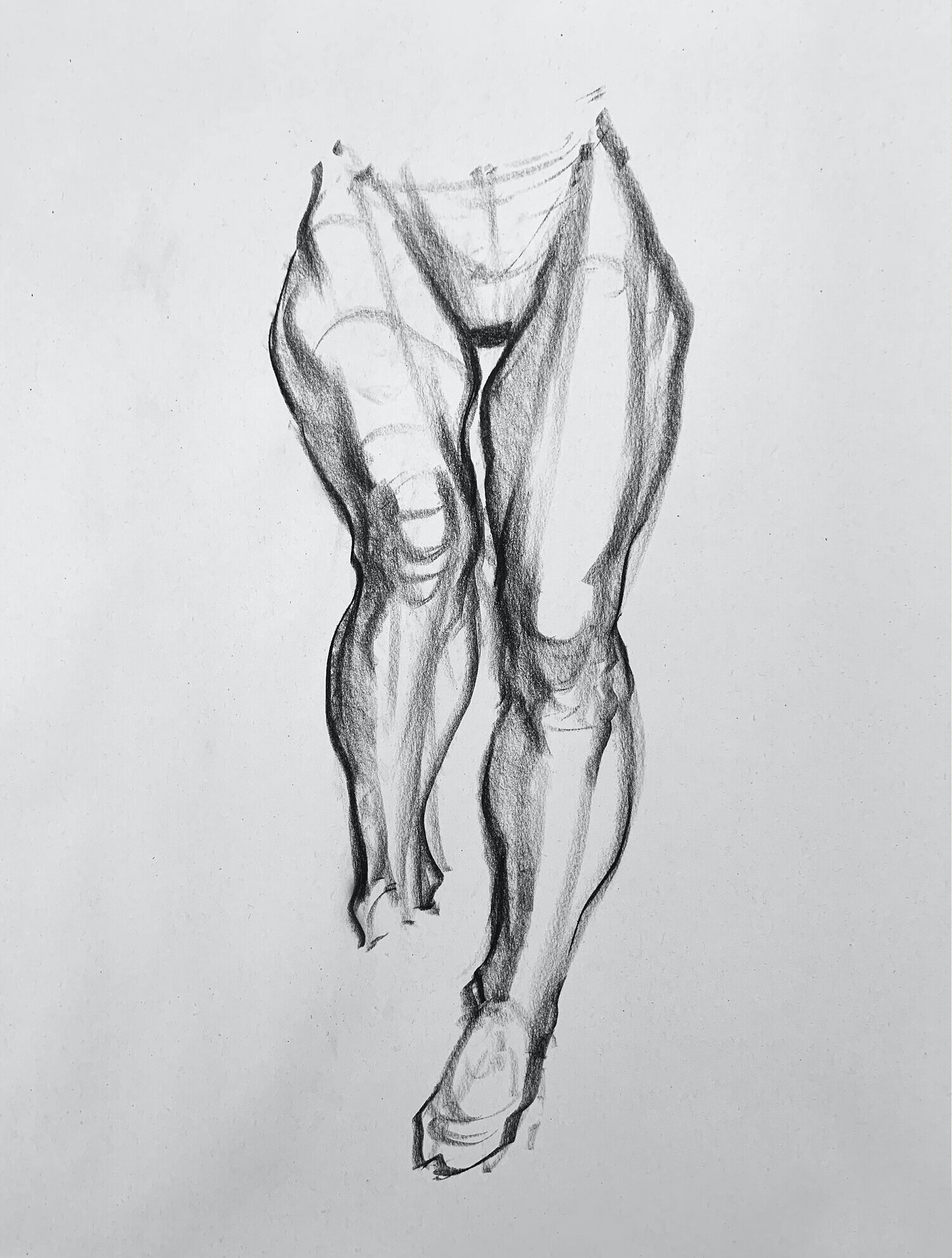Success at the gestural (first) stage of the drawing is critical for how the drawing develops in the later stages. This is the point where not only things like rough proportion need to be decided on but it's also where we make the big decisions for the story of the pose. It's much easier to make adjustments at this stage than to try and fix or adjust things down the line. There is a bit of an oxymoron going on here because while we're making all these important decisions that will affect the drawings later development it's also the stage that should feel spontaneous and free, where we bring 'life' to the pose. Good gesture is an art in it's own right and with practice we can learn how to strike that balance.
Drawing from memory
Sometimes when drawing time is limited I’ll do a quick exercise from memory, maybe 10-20 mins in length. I’ll just work through an idea, in this case a leg study but it could be anything really. It’s a great way to gauge how well you know a subject and helps keep the tools sharp. It feels similar and I think has similar rewards to doing scales or exercises on a musical instrument.
Drawing with intention
I think it's really useful to go into a drawing with intention. Before starting a drawing ask yourself what it is you want to say. What speaks to you about the pose and what's the story you want to tell. It's so easy to go into autopilot and just copy what's in front of you. Give yourself that moment to gather your thoughts, then draw!
Time management in drawing
Knowing how long a pose will be and knowing what I can accomplish within a particular time frame is really important for how I approach drawing with a live model.
For example, let's say it's a five minute pose, I think it's reasonable to say that I probably won't get into a fully rendered light and shadow drawing in that amount time, but what about a fifteen or twenty minute pose? Suddenly that question gets harder to answer. I've seen students in class do a lovely line drawing and then with two minutes left on the clock start to add lights and shadow. Ultimately the drawing looks unfinished by the end of the pose whereas two minutes earlier they had a perfectly fine, finished drawing. Ask yourself before you go to the next stage of developing the drawing if you'll have time to get down what you need to before the end of the pose. In the example above with two minutes left on the clock I might quickly 'shadow map' so I can finish the drawing at a later time, or get my tools ready for the next pose.
As you gain experience your intuition for what you can get done in a given time frame will get more refined. I'd suggest timing the pose yourself and not just relying on the tutor or the model to run the clock.
Try and be mindful of the time and what you'll be able to do with it.
I've more to say on this subject but that's for another time!
Sometimes, less is more!
Shorter poses give us the opportunity to get right to the point without getting too fussy or obsessing over the details. When working on shorter poses ask yourself, what's absolutely necessary to tell the story? Everything else is a bonus. 10 min, charcoal on newsprint.
Drawing from reference
When I can't get in front of a live model I practice from photo reference or from memory. It doesn't replace working with a live model, but if you can resist the temptation of just copying a series of shapes and think about the form in three dimensional space, photo's can be a very useful tool for us to keep our skills sharp. It's also useful for working with poses that a model typically wouldn't be able to hold.
Squint and simplify!
I'm always looking for opportunities to simplify the tonal structures and relationships between light and shadow. If we try to capture everything we see, we inevitably end up with too much noise. Simplicity is usually the key. Squinting is a great way to get rid of a lot of the noise and to find the major transitions, just remember to stop squinting before you start drawing!
Push those proportions!
In Figure Drawing, one of the keys to maintaining vitality and life in a drawing is down to how you handle exaggeration. I always try to push a pose 10% further than what’s in front of me. That way, when the drawing settles down you still have something with life and not a stiff facsimile. This can also apply to proportion. I find it’s a good exercise to push proportion till it ‘almost’ breaks. Sometimes you go too far but but that’s half the fun of it!
Quick Tips #1 Foreshortening
Foreshortening doesn't have to be scary! Here's a simple way to think about it. I'm using a drawing done a few nights ago which I thought would make a good example to demonstrate these ideas. This is part of my thought process as I'm drawing. Hope it helps!





